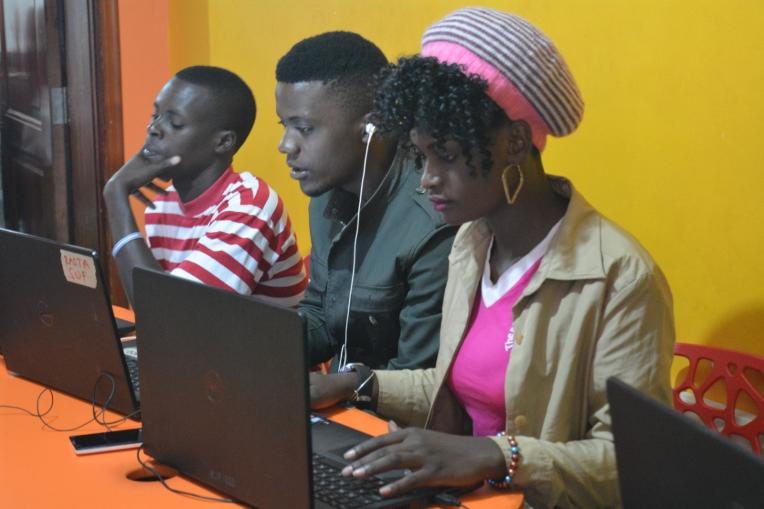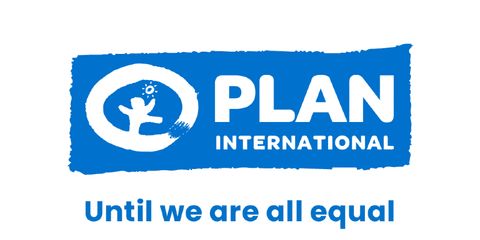16 APRIL 2018
If the digital world grows without the input and participation of girls and women, we risk leaving them even further behind. This is our 4-step guide towards digitally empowered girls.

Despite efforts to redress the balance over the last 20 years, girls and women still face barriers to digital training, experience, careers and opportunities due to their gender.
Not only does this digital gender gap exist, it has grown wider in recent years. The gap between men and women using the internet has grown from 11% to 11.6% between 2011 and 2017. Women are on average 10% less likely to own a mobile phone than men with the gap being widest in South Asia at an alarming 26%.
As digital participation grows across the globe, the sizeable gender gap in access to technology in certain countries is a stark reminder of the inequality between men and women.
This must be addressed with safe and equal access to education and skills training, but also by tackling the stereotypes and social expectations that hold girls back from technology subjects and careers.
If the digital world grows without the input and participation of girls and women, we risk leaving them even further behind.
Here’s our 4 step guide towards creating empowered girls who will thrive in a digital world.
1. Educate girls equally
The first step towards improving women’s and girls’ access to technology and digital spaces is to push digital technology education and actively support and promote girls’ participation in related subjects. This will help ensure that they have equal access to opportunities in the workplaces of the future.
“Before I came to work here I thought that technology was a very masculine area.”
However, governments, families, communities and organisations must also challenge the stereotypes that dissuade girls from studying ICT subjects and pursuing careers in these sectors.
One way to achieve this is to promote role models and mentors for girls so that they can grow up knowing and believing that their gender should not be a barrier to anything they want to become.
In partnership with Accenture, Plan International Brazil are helping increase young women’s involvement in ICT careers through the Youth Building the Future project.
Young women such as Thamires, 21, can obtain qualifications through skills training, followed up with career mentoring.
“Before I came to work here I thought that technology was a very masculine area but here you see a lot of women who have the opportunity to work as equals in relation to men.”
2. Close the tech access and usage gap
Girls might be reluctant to access computer classes and internet cafes because these spaces are dominated by men or they are located in places that are not accessible to women.
This can be remedied by creating classes and sessions specifically targeting girls in locations accessible to them and teaching digital literacy and ensuring they know how to get the most out of their devices.
But we must also ask global girls and women and girls what they need from technology: do they want to connect with their peers, access information, use it for mobile financial services, or something else? What currently prevents them from utilising and creating technology to improve their own lives?
In Timor-Leste, a smartphone app developed in partnership with Marie Stopes is helping girls and young women learn about sexual and reproductive health and access relevant services.
One major function of the Reprodutiva app is is a chat function that gives girls direct access to healthcare professionals, providing a safe and confidential space for young people to discuss sexual and reproductive health in a country where these topics are very much taboo.
Fifteen year old Grazinha is finding the app useful and empowering.
“This app can help me to develop myself as a girl and know about my body.”
“I believe if women have access to this app they will feel healthy. It helps us avoid traditional myths about our health – we learn scientific knowledge about sexuality instead.”
3. Make digital environments safe for girls
Safety is a justifiable concern for girls and women in online spaces. The digital world reflects the diversity of the physical world, and girls experience many of the same forms of violence, harassment and abuse online as they do elsewhere.
Ensuring girls are aware of the risks associated with using technology and being online and know what to do and who to contact if anything makes them feel uneasy is a crucial part of closing the digital gender gap.
In partnership with Telenor Pakistan, Plan International has set up IT labs in 44 schools across four regions so girls can access digital technology while learning to use the internet safely.
The project has trained over 200 teachers and reached over 8,300 girls from marginalised communities. Girls learn to use word processing software to write letters and job applications, as well as setting up their first email addresses and social media profiles. Students have been through internet safety training to help them identify and avoid online harassment and abuse.
“Computing was being taught as an optional subject at our school. Similarly, there was no designated IT teacher,” says Salma, a secondary school student from Thatta. “Now, our teachers have been trained in computing, digital learning and online safety.”
4. Empower girls and women to create digital technology
It is important to recognise the role of women and girls not just as users and consumers of technology, but as developers and creators, too.
Much of the technology and digital content we use today has been designed and developed by men – but research has shown that women and girls often use technology and digital tools in different ways to boys and men, and therefore their needs are also likely to be different.
I can now think in a more scientific and creative way. I will now be coding away problems!
As we clear the path for women and girls to have access to technology and digital content on par with boys and men, it is essential that we also enable and promote their participation as the makers and creators of tech.
In Uganda, the SmartUp Factory project has brought ICT training to marginalised girls and young women and empowered them to create technology that is relevant and useful to girls.
Fiona, 20, has thrived during the project.
“This project has made me love technology. I have learned app development and hardware programming. For instance, I have been able to develop an app which is focused on providing reliable and safe motorcycle taxi transport within the cities. I can now think in a more scientific and creative way. I will now be coding away problems!”
“For girls like me who had never thought of technology, this has been a great opportunity. I am what I am because of SmartUp.”
Categories: Education, Sexual and reproductive health and rights, Skills and work


